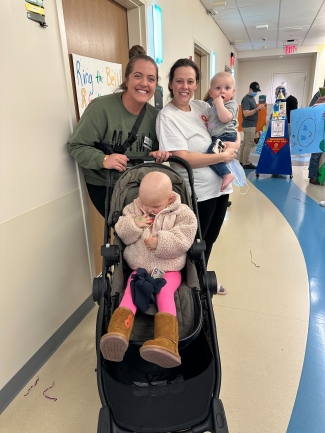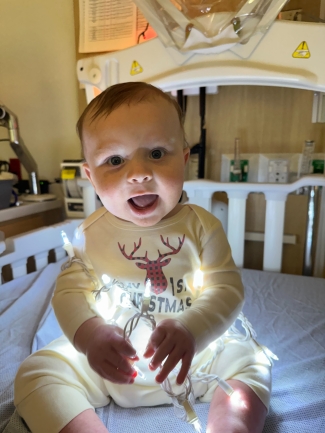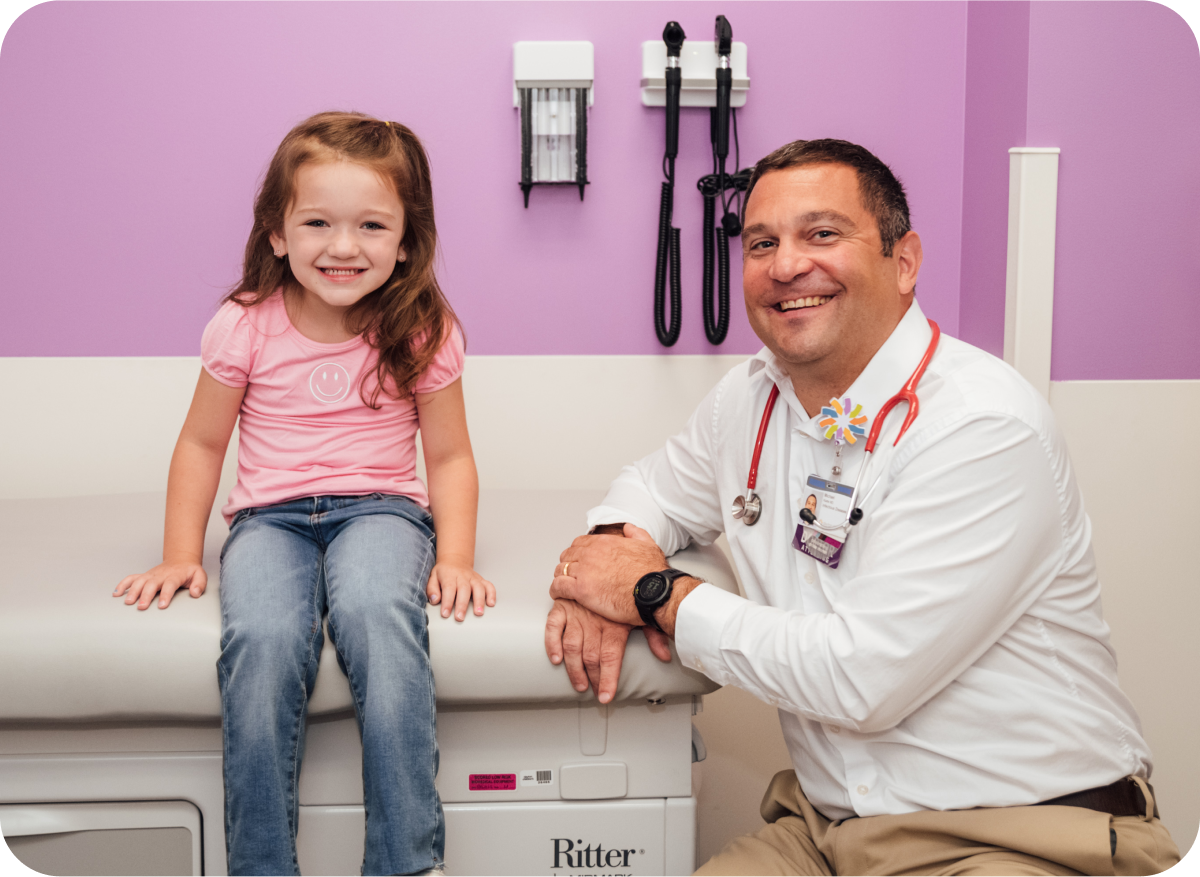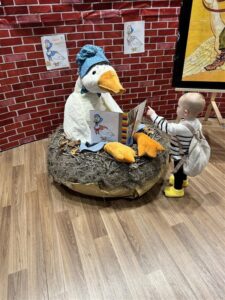Nolan O’Neill

Nolan’s journey with leukemia and the bonds that helped get his family through
- patient name: Nolan O’Neill
- patient age: 2
- condition: acute myeloid leukemia
- seen in: hematology/oncology
- providers: Mukund Dole, MD
Nolan was just five months old when his family’s life took an unexpected turn. One night, he woke up screaming inconsolably. His mom, Kim, had recently been sick, so his parents initially thought he might be getting sick, too. But after a few hours with little change, Kim and her husband, Pat, decided to take Nolan to the emergency department (ED) at Dayton Children’s.
What they first thought was a simple stomach flu or a minor ailment turned into a long night in the ED. After numerous tests and consultations, his family received the devastating news: Nolan had leukemia.
“The first few days were a blur,” said Kim. “We wound up in the pediatric intensive care unit (PICU) on the first day. It was so scary. It was emotional. It was devastating seeing our baby hooked up to monitors, poked, prodded and not being able to console him.”
After more tests and observation, Nolan’s care team was able to narrow down his diagnosis to acute myeloid leukemia. According to the American Cancer Society, Acute myeloid leukemia (AML) starts in the bone marrow (the soft inner part of certain bones, where new blood cells are made), but most often it quickly moves into the blood too. It can sometimes spread to other parts of the body.
With his diagnosis confirmed, his care team, led by Mukund Dole, MD, began his treatment. This included a study with five treatment cycles, each of which lasted about one month. Nolan had to stay in the hospital during that time because his immune system became very weak. To avoid exposure to germs and other illnesses, Nolan also couldn’t have visitors or leave his room.

making connections
With Nolan being limited to the four walls of his room for months at time while he received treatment, Kim was hoping to connect with other families going through a similar situation. That connection came in the hallway of the hospital.
Kim met Olivia and Brittnee, two moms of children with cancer, in the hallways of the hospital during the times when the family wasn’t isolated. They would walk and talk about their journeys and experiences living with cancer. When Kim needed to isolate, their connection was maintained through constant messaging and following one another on social media.
“We all followed each other’s journeys through social media. And we all cheered each other on through the big wins, little wins and hard times,” Kim said. “The cancer family relationships are just a bonded relationship. We know what is being felt. We can say we’ve been there. So, a unique bond is formed.”
The friendships that have formed within the Dayton Children’s cancer community have made an extremely difficult situation just a little more bearable for Kim and her family.
“I can’t describe what it meant to me. It’s beyond words. It’s so heartfelt knowing you have the love from others. And no matter where we are in life, we know what we went through together,” said Kim. “As a caretaker, it’s hard. It’s hard watching your child go through this. So, knowing they were rooting for us and understood when we got a fever what that meant is a feeling of almost relief. They just know immediately how you feel.”one more day.


life after treatment
After a six-month inpatient stay and intensive treatment, Nolan was able to ring the bell on the hematology/oncology floor at Dayton Children’s to symbolize the end of his cancer journey. His care team and hospital staff lined the walls to celebrate this huge milestone.
Nolan made it home right before his first birthday on May 12 and was able to celebrate with his friends and family.
Today, Nolan likes listening to music, playing instruments and dancing, activities Kim thinks he learned to love through music therapy at the hospital. After living with cancer for many months, Kim is hoping Nolan can go back to being a kid.
“We want him to go and live a normal life, just be a toddler. He deserves to get dirty, be outside, and do all the things toddlers are supposed to do.”
Moving forward, Nolan will continue to be monitored through monthly blood work. As long as he stays in remission, he will not need additional treatment, including a bone marrow transplant.
Nolan is part of a series featuring families who bonded together during their children’s cancer treatment at Dayton Children’s. These families supported each other through the highs and lows of their journeys – the encouragement, positivity and connection with this group helped them through their most difficult moments. Read more of their stories here: Darcie Osborne, Blakely Mefford, Brandon Watts.
share your story
Every patient journey at Dayton Children’s is powerful — from NICU miracles to courageous cancer survivors and beyond. These patient stories not only celebrate our families but also offer hope and encouragement to others facing similar challenges. Share your experience today and help inspire, support, and celebrate the strength of our patients and families.

care that goes above and beyond
Because every child deserves care that goes above and beyond, Dayton Children’s provides compassionate, expert care for kids of all ages. Find a provider, schedule an appointment, or learn more about conditions we treat today.




